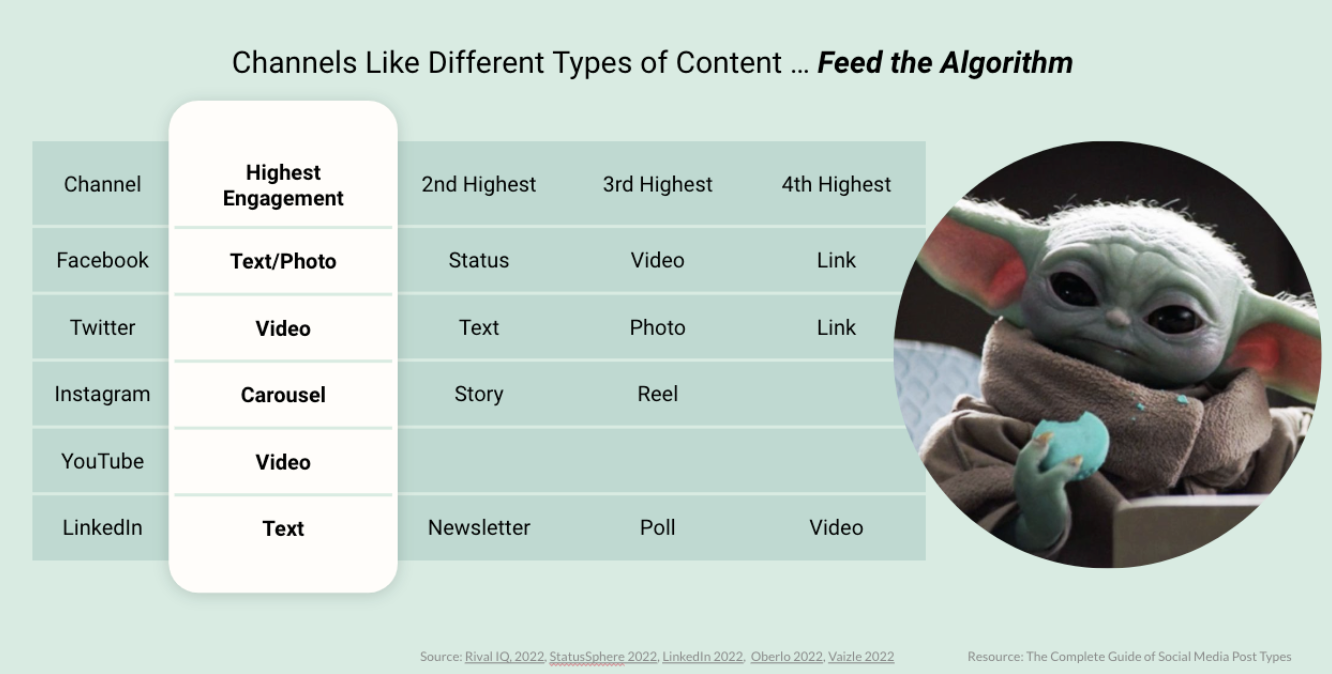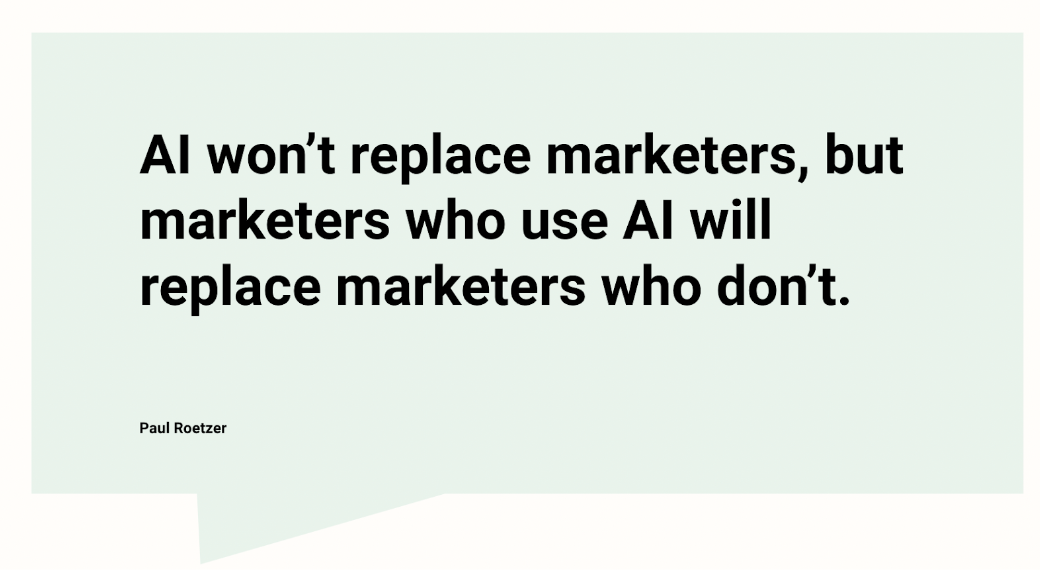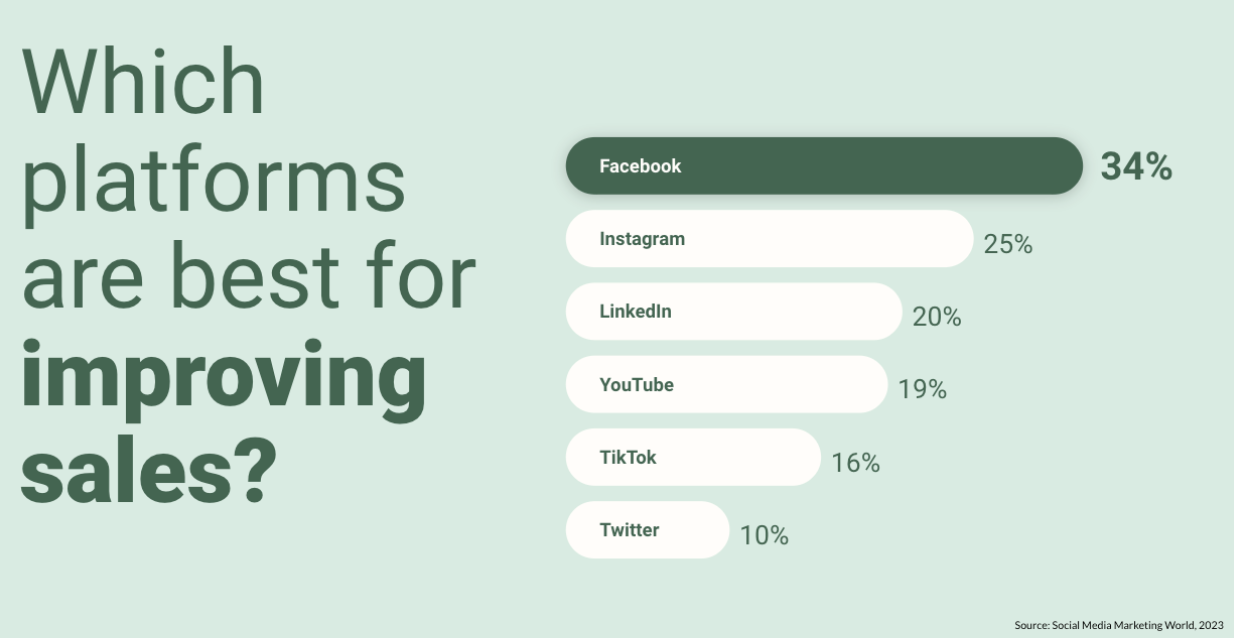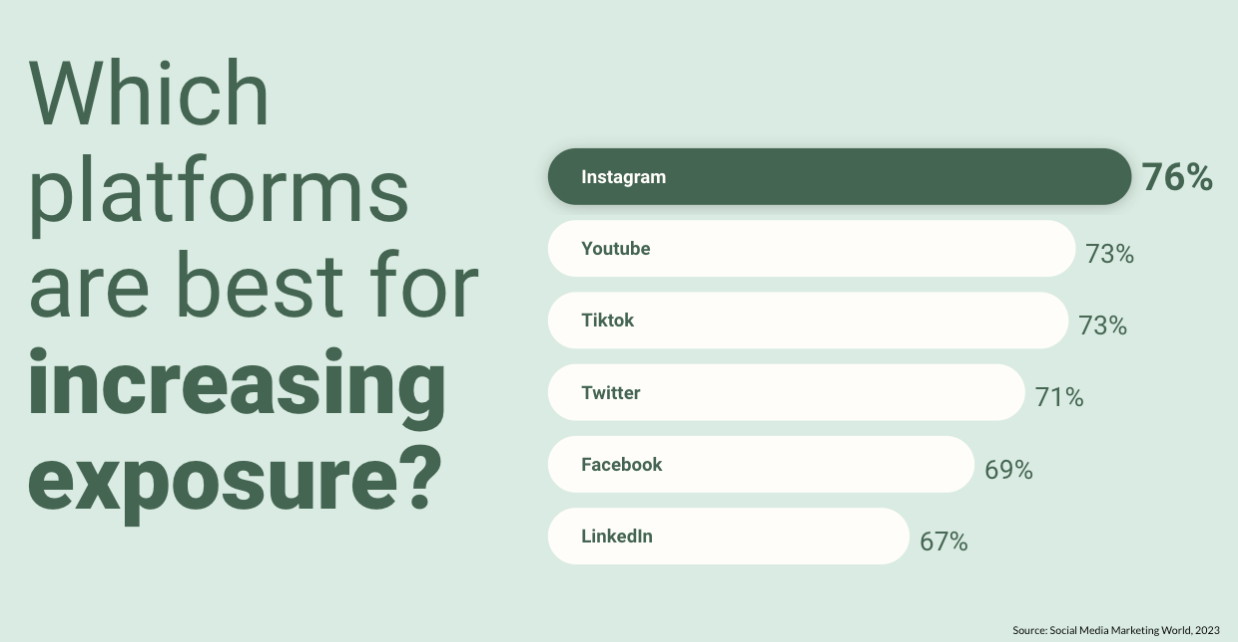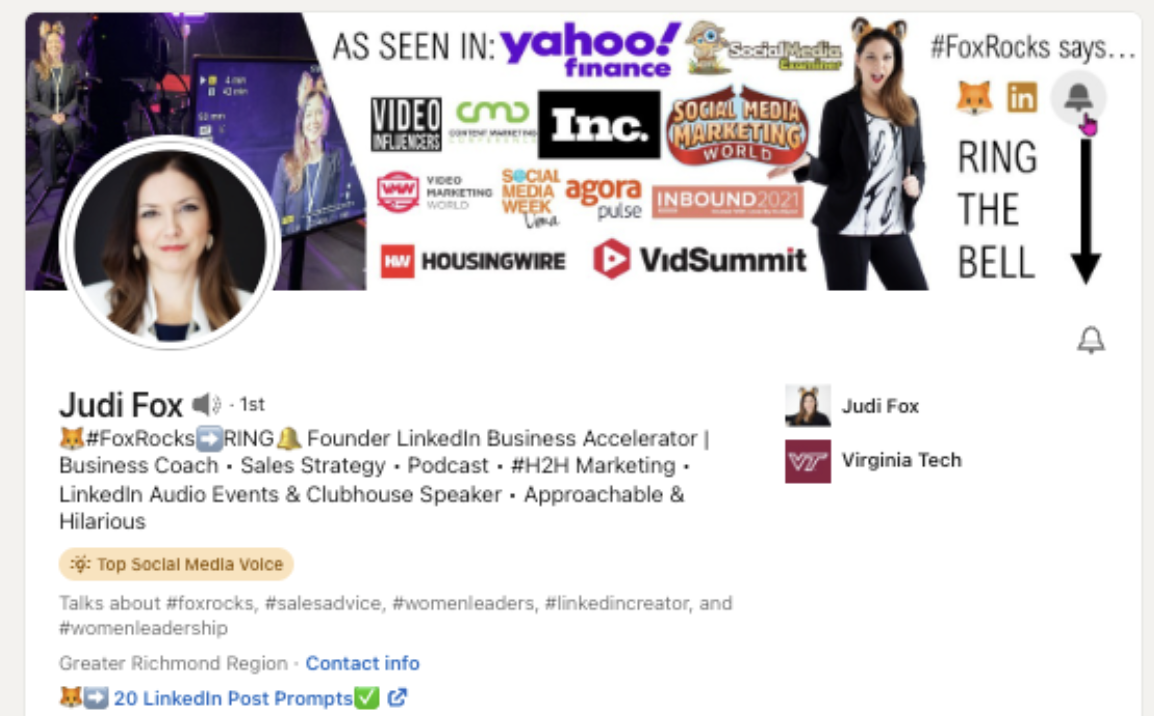The world of social media is constantly evolving, and keeping up with the latest trends and strategies is essential for any business or marketer looking to make an impact online. Platforms are constantly developing new features that get prioritized in the algorithm. Our team recently revised our social media strategies to align with the metrics and algorithm of each platform, and in this post, we've outlined some of those findings.
For starters, it’s important that you are using post types that work for each social media platform. To do this, it’s important to feed the algorithm with the post types each platform prioritizes.
Note: Meta just released its Q1 2023 Widely Viewed Content Report for Facebook and it showed that 92.3% of the views in the US during Q1 2023 did not include a link to a source outside of Facebook. So..say goodbye to link posts. 👋
AI: Future of Social Media Marketing
Every so often, an industry-disrupting technology emerges into our lives, and most recently, that technology is the quickly-evolving world of Artificial Intelligence (AI).
Marketers who use AI will be able to work more efficiently and create high-quality posts. Leaders who embrace AI will experience faster growth and get ahead. While automation is useful and we can now use AI to create efficiency in repetitive tasks or writing, we still need the human touch to ensure our marketing efforts don't become generic – especially in our industry of EdTech. Nuances and subtext are so important to ensure that you are speaking in a way that your target audience understands and values. Finding the balance between the human aspect and the machine side of things is key for successfully using AI tools in social media marketing.
Depending on the role or function you’re looking to use AI for, there are tons of different tools that you can use to make your life a little easier. Here are a few that our team has been experimenting with:
ChatGPT (duh)
Descript - Can turn podcasts into blog posts instantly. Learn how.
Hyperwrite - AI writing companion that helps you get through writer’s block and can even help you with emails!
Jasper.ai - Helps craft social media posts, blog posts, website copy, and more
Wordtune - A free chrome extension that helps you write exactly what you mean through clear, compelling, and authentic writing.
Facebook is not Dead
While organic reach on Facebook may be dead, the social media platform itself is still very much alive. With its massive user base of over 2 billion users, Facebook has been identified by a recent Social Media Examiner study as the number one platform to convert. By focusing on metrics that matter most and creating high-quality content, you can increase your chances of success on the platform and take back control of your social media strategy.
While images and videos may be more visually appealing (and prove more successful on other platforms), on Facebook, text posts are more likely to generate engagement and build trust with your audience. Facebook rewards activity and quality content, so the more engagement you can generate, the more likely your content is to be shown to your audience. This is why it's important to focus on metrics that matter, such as website traffic, lead conversions, and sales, rather than simply trying to increase reach.
Instagram Has An Identity Crisis
Instagram has been experiencing an identity crisis for quite some time now. As a result, algorithm changes and new features are constantly being introduced, making it difficult for businesses to keep up. Although navigating these changes can be difficult, it’s worth the effort. Instagram is the best platform to turn to if you want to increase your brand awareness.
As with most social media platforms, high-quality content is king. Your audience simply won't engage with low-quality or irrelevant content. However, the type of content you prioritize should depend on your goals.
If your goal is growth or reach, focus on reels and collaboration posts.
If you want to prioritize engagement, focus your time and efforts on posts that are pushed to people who already follow you or are connected to you with stories and connected engagement.
If your main goal is sales, make sure your account is optimized so visitors can easily find where to go to make a purchase. This can include adding a link to your website or online store in your bio, utilizing shoppable posts, or incorporating call-to-action buttons in your posts. And consider leveraging paid Instagram ads to boost your reach and sales.
Above all, consistently nurturing your audience with high-quality content is crucial for achieving any of your Instagram goals. This means staying true to your brand's message and values, and creating content that resonates with your target audience. By doing so, you'll not only attract new followers, but also retain existing ones and ultimately drive more conversions.
LinkedIn is Evolving
While LinkedIn still heavily prioritizes jobs and career-seeking resources, it is becoming more than just a place to turn to for recruiting and job searching. As with all platforms, it’s important to experiment with their most recent features and tell your audience what to do through clear calls-to-action (CTAs).
It's crucial to be clear and actionable on LinkedIn so that visitors know exactly what you want them to do. You can do this through strategically using every area of your profile to point to your CTA. Judi Fox, a top LinkedIn Voice, shared how she points her audience to “ring the bell” on LinkedIn 3+ times in her profile. This is her main CTA and something all LinkedIn pages should point to. Once people ring the bell, they receive a notification every time you post.
Another way to drive users to your LinkedIn posts is through "Power Hours," which involves generating comments and engaging with your post in real-time during the first hour after it goes live. This can help boost the post's success and improve its visibility on the algorithm. This is especially important for content that you're particularly proud of or excited about. You can accomplish this by sending the link to your team members, or even blocking time on everyone’s calendars when the post goes live and asking everyone to engage. It’s a quick and easy way to boost overall engagement (and we do it every single time we post on LinkedIn).
One of LinkedIn’s newest features that are being prioritized in the algorithm is Carousel posts, which are posts with multiple images. We recommend trying these out by recycling the best-performing carousel post from Instagram and saving it as a PDF. You can then upload it as a document on LinkedIn to create a carousel post. This is a great way to add variety to your content and leverage a new feature on the platform.
In the ever-changing world of social media, staying up to date with the latest trends and strategies is crucial for businesses and marketers. As we adjust our strategies to the latest metrics that work, here are the highlights of what our team is finding:
The rise of AI presents new opportunities in efficient content creation, personalization, real-time data analysis, automation, and predictive analysis.
Despite the decline in organic reach, Facebook remains a vital platform that converts with a massive user base, emphasizing the importance of high-quality text posts to generate engagement and build trust.
Instagram is undergoing an identity crisis, but it’s a great place to increase exposure. By prioritizing high-quality content, adapting to algorithm changes, and leveraging new features like broadcast channels businesses can still find success through all of the changes.
LinkedIn is evolving, and attention should be directed towards clear and actionable CTAs, getting your team actively involved in your engagement strategy, and prioritizing new features such as carousel posts.
Even as we type this post, the social media platforms are making adjustments that may change which strategies work. That’s why as marketers we need to be as agile and adaptable as possible by testing new options with your audiences, and sticking with things that show successful metrics.
This blog post was written in collaboration with Jordan Moldenhauer.


